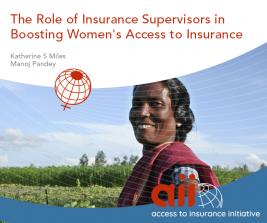To be able to provide well-designed insurance solutions that address the needs of low-income and excluded customers in a manner that is customer-friendly but also economically sustainable, calls for innovation – i.e. to do new things or to do things differently.
Women generally tend to be more uninsured as compared to men in a majority of emerging markets. In conversations with insurers and even those in the regulatory authorities, we see limited recognition of women as a viable customer segment. Even a gender-neutral approach to insurance, though well-intended, creates a disproportionate impact on women and unintentionally leaves them behind because some of the specific needs of women are not considered.
As insurers and practitioners introduce and test new products, new business models or newer ways to mitigate risks faced by the low-income sections, it demands more attention from the insurance supervisors. They are looking at innovation from the outside in as they are not part of the innovation process. This, in turn, creates a context of silos where technology leads and regulation lags behind, taking a toll on the resources of all stakeholders as well as on the final product.
Hence, there is a need to be innovative in approaches to addressing women customers, especially those who are from the low-income segments.
This case study is a product of the project ‘Empowering supervisors to improve women’s access to insurance’ supported by the Swiss Development Cooperation (SDC). Read more about this funding partnership here.










